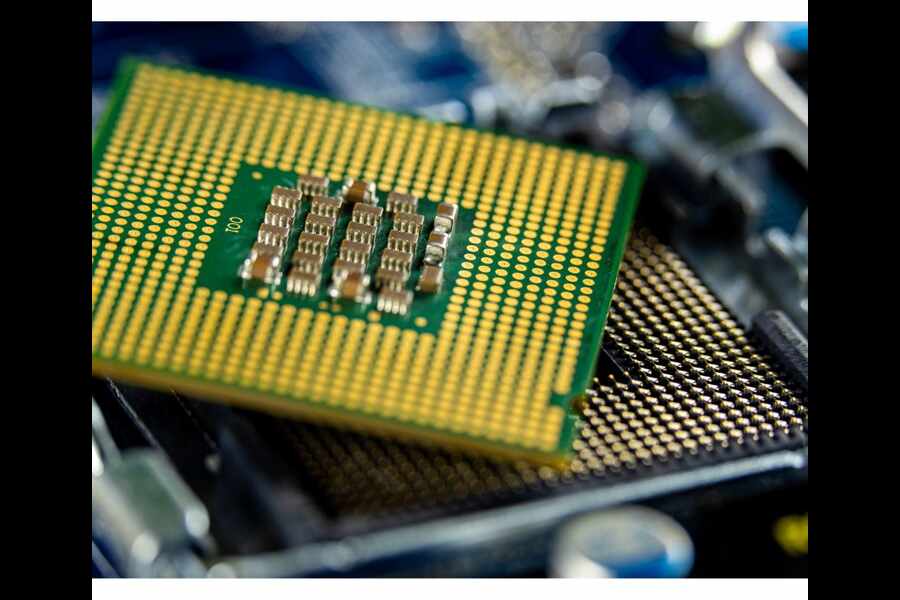The Microelectronics Production industry encompasses the design, manufacturing, and assembly of miniature electronic components and systems, including semiconductors, integrated circuits (ICs), microprocessors, sensors, and memory chips. These components form the backbone of modern technology, powering everything from smartphones and computers to medical devices, automotive systems, industrial automation, and artificial intelligence (AI) applications. The industry includes foundries (such as TSMC and GlobalFoundries), fabless semiconductor companies (like Qualcomm and NVIDIA), and vertically integrated manufacturers (such as Intel and Samsung). Given the rapid pace of technological innovation, companies in this sector often engage in Mergers & Acquisitions (M&A) to secure competitive advantages, gain access to cutting-edge technology, expand into new markets, and achieve cost efficiencies through economies of scale.
Frequency and Strategic Drivers of M&A in Microelectronics
M&A activities in the microelectronics sector are frequent and driven by several strategic objectives:
- Technological Advancement: Acquiring firms with innovative technologies enables companies to stay competitive in a rapidly evolving market.
- Market Expansion: Mergers allow companies to enter new geographic markets and diversify their customer base.
- Supply Chain Integration: Vertical integration through acquisitions helps in streamlining supply chains and reducing dependency on external suppliers.
- Economies of Scale: Consolidation can lead to cost reductions and improved operational efficiencies.
- Regulatory and Geopolitical Considerations: Companies often engage in M&A to navigate global trade policies and mitigate risks associated with export restrictions.
Notable M&A Deals in the Microelectronics Industry
Here is a list of some of the most significant M&A transactions in the microelectronics sector, highlighting their strategic intent and outcomes:
- AMD’s Acquisition of Xilinx (2022) – $49.8 billion: Advanced Micro Devices (AMD) acquired Xilinx to enhance its adaptive computing capabilities and expand into new markets such as automotive and telecommunications.
- Avago Technologies’ Acquisition of Broadcom (2015) – $37 billion: Avago acquired Broadcom, creating a diversified global semiconductor leader with a broad product portfolio.
- NXP Semiconductors’ Acquisition of Freescale Semiconductor (2015) – $11.8 billion: This deal positioned NXP as a leader in automotive semiconductors and the IoT market.
- SoftBank’s Acquisition of ARM Holdings (2016) – $32 billion: Japanese conglomerate SoftBank acquired UK-based ARM Holdings to capitalize on the growing demand for IoT technologies.
- Intel’s Acquisition of Mobileye (2017) – $15.3 billion: Intel strengthened its position in autonomous vehicle technology through this acquisition.
- Qualcomm’s Attempted Acquisition of NXP Semiconductors (2016) – $47 billion: The deal was ultimately abandoned due to regulatory challenges.
- NVIDIA’s Attempted Acquisition of ARM Holdings (2020) – $40 billion: The deal faced significant regulatory hurdles and was eventually called off.
- Texas Instruments’ Acquisition of National Semiconductor (2011) – $6.5 billion: This acquisition expanded Texas Instruments’ analog semiconductor portfolio.
- ON Semiconductor’s Acquisition of Fairchild Semiconductor (2016) – $2.4 billion: ON Semiconductor strengthened its position in the power semiconductor market.
- Marvell Technology’s Acquisition of Inphi Corporation (2021) – $10 billion: Marvell enhanced its data infrastructure offerings through this deal.
Regional Highlights
- Europe: The acquisition of UK-based ARM Holdings by SoftBank highlighted Europe’s significant role in the global semiconductor landscape.
- United States: The U.S. has been a hub for major deals, with companies like AMD, Intel, and Qualcomm actively pursuing acquisitions to bolster their technological edge.
- Asia: Asian firms, notably SoftBank and Avago (Singapore-based), have engaged in substantial M&A activities to expand their global footprint.
- Australia and Africa: These regions have seen comparatively fewer large-scale M&A transactions in the microelectronics sector, reflecting their emerging status in the global semiconductor industry.
Recent Activities 2024/2025
In 2024 and early 2025, the microelectronics industry witnessed significant M&A activity aimed at strengthening technological capabilities and expanding market reach.
In January 2024, Renesas Electronics agreed to acquire Transphorm, a gallium nitride chip maker, for $339 million, completing the acquisition by June 2024. Subsequently, in February 2024, Renesas announced its agreement to purchase Altium, a printed circuit board design software company, for $5.9 billion, finalizing the deal in August 2024.
In March 2025, reports emerged of a potential merger between GlobalFoundries and Taiwan’s United Microelectronics Corporation (UMC), aiming to create a U.S.-based chipmaker with a global manufacturing footprint. Additionally, in April 2025, Qualcomm considered a takeover offer for the UK-based semiconductor intellectual property provider Alphawave, reflecting ongoing consolidation efforts within the industry.
Successes and Challenges
While many of these deals have achieved their strategic objectives, some faced challenges:
- Successful Integration: AMD’s acquisition of Xilinx allowed it to diversify its product offerings and enter new markets effectively.
- Regulatory Hurdles: NVIDIA’s attempted acquisition of ARM Holdings was abandoned due to antitrust concerns, illustrating the complexities of large-scale mergers in this sector.
Strategic Considerations
Companies engage in M&A to rapidly acquire new technologies, enter emerging markets, and achieve synergies that would be time-consuming to develop organically. However, these deals require careful navigation of regulatory landscapes and cultural integration to realize their full potential.
Conclusion
M&A activities in the microelectronics production industry are instrumental for companies seeking to maintain competitiveness and drive innovation. The strategic rationale behind these deals often encompasses technological advancement, market expansion, and operational efficiencies. As the industry continues to evolve, M&A will remain a key strategy for growth and consolidation.

